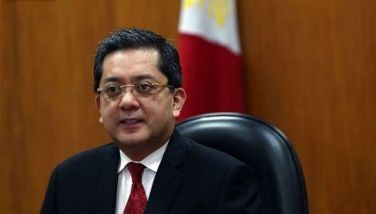Close VP fight may delay canvassing
MANILA, Philippines – The tight vice presidential race could delay the canvassing of votes for president and vice president by Congress, House Majority Leader Neptali Gonzales ll said yesterday.
Gonzales said members of the Senate-House canvassing committee and lawyers of Sen. Ferdinand Marcos Jr. and Camarines Sur Rep. Leni Robredo could subject the certificates of canvass (COCs) to close scrutiny for defects or signs of irregularities.
“We will have no problem with the presidential candidates because of the huge lead of Mayor (Rodrigo) Duterte (of Davao City). But in the VP race, we are sure they will scrutinize the COCs,” he said.
He noted that observations and objections from supporters of Marcos and Robredo among lawmakers and lawyers of the two candidates would result in canvassing delays.
Since the COCs contain votes both for president and vice president, delay in the tabulation of votes for Marcos and Robredo would mean delay in the tallying of votes for president.
As of yesterday, Robredo, runningmate of administration standard-bearer Manuel Roxas II, was ahead of Marcos in the unofficial tally by over a hundred thousand votes.
Election lawyer Romulo Macalintal said the possibility of the two leading vice presidential aspirants receiving exactly the same number of votes is remote.
“It has not happened in past elections. However, in case of a tie, the Constitution provides that the Senate and the House of Representatives, voting separately, will determine the winner by a majority vote of each chamber,” he said.
The pertinent constitutional provision states: “The person having the highest number of votes shall be proclaimed elected, but in case two or more shall have equal and highest number of votes, one of them shall forthwith be chosen by the vote of a majority of all members of both houses of Congress, voting separately.”
It further provides that Congress “shall promulgate its rules for the canvassing of the certificates.”
The House and the Senate have prepared a draft of the canvassing rules for approval when they convene as a canvassing board later this month.
Under the draft, Speaker Feliciano Belmonte Jr. and Senate President Franklin Drilon would create a joint committee to conduct the canvassing.
Belmonte and Drilon would chair the joint committee, with eight additional members from each chamber to be appointed by them. A candidate for president or vice president would not be eligible to sit in the panel.
Belmonte and Drilon would also appoint five alternate members from the House and the Senate.
In tallying the votes, the canvassing committee would start with the COCs for overseas absentee and local voting. COCs from provincial and city canvassing boards would then follow.
The committee would compare the manually filled-out COCs and the electronic copies to be generated by the vote counting machines (VCMs).
Lawyers of candidates would be allowed to manifest their observations on the canvass documents. The joint committee would have the power to resolve all disputes.
After the canvassing is finished, the committee would prepare a report, which would be submitted to a joint House-Senate session that in turn would pass a resolution approving such report.
The winning presidential and vice presidential candidates would then be proclaimed.
Under their legislative calendar, the House and the Senate have only three weeks to proclaim the winners.
The results of the Random Manual Audit may be used in questioning the outcome of the elections. Covered by RMA are the positions for president, vice president, governor and mayor.
Comelec Commissioner and RMA committee head Luie Guia explained RMA results may be used in questioning the count and in finding discrepancy.
“If ever there (is discrepancy) maybe theoretically (it can be used). But we would just like to emphasize that the RMA is not to determine who won or to validate the winner,” he added.
The RMA is intended to test the performance of the VCMs “by comparing how the machines appreciated the votes vis-à-vis how we see it visually.”
RMA is a requirement under Republic Act 9369 or the poll automation law to make sure that the VCMs count the votes accurately. This can be validated by an RMA team that does manual count of votes coming from randomly selected clustered precincts.
For this election, the Comelec increased the number of clustered precincts from 213 in 2013 polls to 715. – Jess Diaz, Sheila Crisostomo
- Latest
- Trending


























